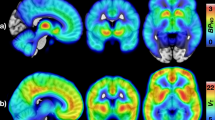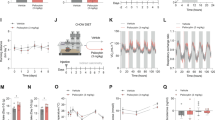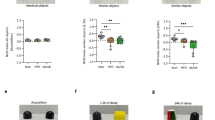Abstract
An increasing perspective conceptualizes obesity and overeating as disorders related to addictive-like processes that could share common neurobiological mechanisms. In the present study, we aimed at validating an animal model of eating addictive-like behavior in mice, based on the DSM-5 substance use disorder criteria, using operant conditioning maintained by highly palatable chocolate-flavored pellets. For this purpose, we evaluated persistence of food-seeking during a period of non-availability of food, motivation for food, and perseverance of responding when the reward was associated with a punishment. This model has allowed identifying extreme subpopulations of mice related to addictive-like behavior. We investigated in these subpopulations the epigenetic and proteomic changes. A significant decrease in DNA methylation of CNR1 gene promoter was revealed in the prefrontal cortex of addict-like mice, which was associated with an upregulation of CB1 protein expression in the same brain area. The pharmacological blockade (rimonabant 3 mg/kg; i.p.) of CB1 receptor during the late training period reduced the percentage of mice that accomplished addiction criteria, which is in agreement with the reduced performance of CB1 knockout mice in this operant training. Proteomic studies have identified proteins differentially expressed in mice vulnerable or not to addictive-like behavior in the hippocampus, striatum, and prefrontal cortex. These changes included proteins involved in impulsivity-like behavior, synaptic plasticity, and cannabinoid signaling modulation, such as alpha-synuclein, phosphatase 1-alpha, doublecortin-like kinase 2, and diacylglycerol kinase zeta, and were validated by immunoblotting. This model provides an excellent tool to investigate the neurobiological substrate underlying the vulnerability to develop eating addictive-like behavior.
Similar content being viewed by others
Log in or create a free account to read this content
Gain free access to this article, as well as selected content from this journal and more on nature.com
or
References
Abeliovich A, Schmitz Y, Farinas I, Choi-Lundberg D, Ho WH, Castillo PE et al (2000). Mice lacking alpha-synuclein display functional deficits in the nigrostriatal dopamine system. Neuron 25: 239–252.
Ambermoon P, Carter A, Hall WD, Dissanayaka NN, O'Sullivan JD (2011). Impulse control disorders in patients with parkinson's disease receiving dopamine replacement therapy: evidence and implications for the addictions field. Addiction 106: 283–293.
Bellocchio L, Lafenetre P, Cannich A, Cota D, Puente N, Grandes P et al (2010). Bimodal control of stimulated food intake by the endocannabinoid system. Nat Neurosci 13: 281–283.
Boyer F, Dreyer JL (2007). Alpha-synuclein in the nucleus accumbens induces changes in cocaine behaviour in rats. Eur J Neurosci 26: 2764–2776.
Brenz Verca MS, Bahi A, Boyer F, Wagner GC, Dreyer JL (2003). Distribution of alpha- and gamma-synucleins in the adult rat brain and their modification by high-dose cocaine treatment. Eur J Neurosci 18: 1923–1938.
Brownell KD (2004). Obesity and managed care: a role for activism and advocacy? Am J Manag Care 10: 353–354.
Curtis C, Davis C (2014). A qualitative study of binge eating and obesity from an addiction perspective. Eat Disord 22: 19–32.
D'Addario C, Micioni Di Bonaventura MV, Pucci M, Romano A, Gaetani S, Ciccocioppo R et al (2014). Endocannabinoid signaling and food addiction. Neurosci Biobehav Rev 47C: 203–224.
Deroche-Gamonet V, Belin D, Piazza PV (2004). Evidence for addiction-like behavior in the rat. Science 305: 1014–1017.
Edelman AM, Kim WY, Higgins D, Goldstein EG, Oberdoerster M, Sigurdson W (2005). Doublecortin kinase-2, a novel doublecortin-related protein kinase associated with terminal segments of axons and dendrites. J Biol Chem 280: 8531–8543.
Everitt BJ, Belin D, Economidou D, Pelloux Y, Dalley JW, Robbins TW (2008). Review. Neural mechanisms underlying the vulnerability to develop compulsive drug-seeking habits and addiction. Philos Trans R Soc Lond B Biol Sci 363: 3125–3135.
Everitt BJ, Robbins TW (2005). Neural systems of reinforcement for drug addiction: from actions to habits to compulsion. Nat Neurosci 8: 1481–1489.
Fadda P, Scherma M, Spano MS, Salis P, Melis V, Fattore L et al (2006). Cannabinoid self-administration increases dopamine release in the nucleus accumbens. Neuroreport 17: 1629–1632.
Gallup (2014). Http://www.Gallup.Com/Poll/170264/Adult-Obesity-Rate.Aspx.
Gantayet A, Jegatheswaran J, Jayakumaran G, Topham MK, Epand RM (2011). Endocannabinoids and diacylglycerol kinase activity. Biochim Biophys Acta 1808: 1050–1053.
Gearhardt AN, Boswell RG, White MA (2014). The association of "food addiction" with disordered eating and body mass index. Eat Behav 15: 427–433.
Gearhardt AN, Roberto CA, Seamans MJ, Corbin WR, Brownell KD (2013). Preliminary validation of the yale food addiction scale for children. Eat Behav 14: 508–512.
Gearhardt AN, White MA, Potenza MN (2011). Binge eating disorder and food addiction. Curr Drug Abuse Rev 4: 201–207.
Haber M, Murai KK (2006). Reshaping neuron-glial communication at hippocampal synapses. Neuron Glia Biol 2: 59–66.
Hebebrand J, Albayrak O, Adan R, Antel J, Dieguez C, de Jong J et al (2014). "Eating addiction", rather than "food addiction", better captures addictive-like eating behavior. Neurosci Biobehav Rev 47C: 295–306.
Heber D, Carpenter CL (2011). Addictive genes and the relationship to obesity and inflammation. Mol Neurobiol 44: 160–165.
Hou H, Sun L, Siddoway BA, Petralia RS, Yang H, Gu H et al (2013). Synaptic NMDA receptor stimulation activates PP1 by inhibiting its phosphorylation by Cdk5. J Cell Biol 203: 521–535.
Jaenisch R, Bird A (2003). Epigenetic regulation of gene expression: how the genome integrates intrinsic and environmental signals. Nat Genet 33: 245–254.
Lecca D, Cacciapaglia F, Valentini V, Di CG (2006). Monitoring extracellular dopamine in the rat nucleus accumbens shell and core during acquisition and maintenance of intravenous WIN 55,212-2 self-administration. Psychopharmacology (Berl) 188: 63–74.
Li KW, Smit A B (2008). Subcellular proteomics in neuroscience. Front Biosci 13: 4416–4425.
Liu Z, Chang GQ, Leibowitz SF (2001). Diacylglycerol kinase zeta in hypothalamus interacts with long form leptin receptor. Relation to dietary fat and body weight regulation. J Biol Chem 276: 5900–5907.
Lupica CR, Riegel AC, Hoffman AF (2004). Marijuana and cannabinoid regulation of brain reward circuits. Br J Pharmacol 143: 227–234.
Maccioni P, Pes D, Carai MA, Gessa GL, Colombo G (2008). Suppression by the cannabinoid cb1 receptor antagonist, rimonabant, of the reinforcing and motivational properties of a chocolate-flavoured beverage in rats. Behav Pharmacol 19: 197–209.
Martin-Garcia E, Burokas A, Kostrzewa E, Gieryk A, Korostynski M, Ziolkowska B et al (2011). New operant model of reinstatement of food-seeking behavior in mice. Psychopharmacology (Berl) 215: 49–70.
Melis M, Pistis M, Perra S, Muntoni AL, Pillolla G, Gessa GL (2004). Endocannabinoids mediate presynaptic inhibition of glutamatergic transmission in rat ventral tegmental area dopamine neurons through activation of CB1 receptors. J Neurosci 24: 53–62.
Mulkey RM, Herron CE, Malenka RC (1993). An essential role for protein phosphatases in hippocampal long-term depression. Science 261: 1051–1055.
Murphy DD, Rueter SM, Trojanowski JQ, Lee VM (2000). Synucleins are developmentally expressed, and alpha-synuclein regulates the size of the presynaptic vesicular pool in primary hippocampal neurons. J Neurosci 20: 3214–3220.
Ortega M, Calva Nieves J, Zamora A, Gelman P, Palma B (2012). Addictions, genomics and proteomics. Salud Ment 35 no.2, pp 129–137.
Pena-Oliver Y, Buchman VL, Dalley JW, Robbins TW, Schumann G, Ripley TL et al (2012). Deletion of alpha-synuclein decreases impulsivity in mice. Genes Brain Behav 11: 137–146.
Piazza PV, Deroche-Gamonet V (2013). A multistep general theory of transition to addiction. Psychopharmacology (Berl) 229: 387–413.
Pretlow RA, Stock CM, Allison S, Roeger L (2015). Treatment of child/adolescent obesity using the addiction model: a smartphone app pilot study. Child Obes (e-pub ahead of print; doi: doi:10.1089/chi.2014.0124.
Schroeder FA, Penta KL, Matevossian A, Jones SR, Konradi C, Tapper AR et al (2008). Drug-induced activation of dopamine D(1) receptor signaling and inhibition of class I/II histone deacetylase induce chromatin remodeling in reward circuitry and modulate cocaine-related behaviors. Neuropsychopharmacology 33: 2981–2992.
Senior SL, Ninkina N, Deacon R, Bannerman D, Buchman VL, Cragg SJ et al (2008). Increased striatal dopamine release and hyperdopaminergic-like behaviour in mice lacking both alpha-synuclein and gamma-synuclein. Eur J Neurosci 27: 947–957.
Shin E, Kashiwagi Y, Kuriu T, Iwasaki H, Tanaka T, Koizumi H et al (2013). Doublecortin-like kinase enhances dendritic remodelling and negatively regulates synapse maturation. Nat Commun 4: 1440.
Steindel F, Lerner R, Haring M, Ruehle S, Marsicano G, Lutz B et al (2013). Neuron-type specific cannabinoid-mediated G protein signalling in mouse hippocampus. J Neurochem 124: 795–807.
Steketee JD (2003). Neurotransmitter systems of the medial prefrontal cortex: potential role in sensitization to psychostimulants. Brain Res Brain Res Rev 41: 203–228.
Szabo B, Siemes S, Wallmichrath I (2002). Inhibition of GABAergic neurotransmission in the ventral tegmental area by cannabinoids. Eur J Neurosci 15: 2057–2061.
Tomasi D, Volkow ND (2013). Striatocortical pathway dysfunction in addiction and obesity: differences and similarities. Crit Rev Biochem Mol Biol 48: 1–19.
Topham MK, Epand RM (2009). Mammalian diacylglycerol kinases: molecular interactions and biological functions of selected isoforms. Biochim Biophys Acta 1790: 416–424.
Volkow ND, Wang GJ, Fowler JS, Tomasi D, Baler R (2012). Food and drug reward: overlapping circuits in human obesity and addiction. Curr Top Behav Neurosci 11: 1–24.
Volkow ND, Wise RA (2005). How can drug addiction help us understand obesity? Nat Neurosci 8: 555–560.
WHO (2008). Summary Report Http://Www.Who.Int/Mediacentre/Factsheets/Fs311/En/.
Yan Z, Hsieh-Wilson L, Feng J, Tomizawa K, Allen PB, Fienberg AA et al (1999). Protein phosphatase 1 modulation of neostriatal AMPA channels: regulation by DARPP-32 and spinophilin. Nat Neurosci 2: 13–17.
Acknowledgements
We thank Dr Andrés Ozaita for invaluable technical assistance, and Sami Kummer for his help in the behavioral studies.
Author Contributions
SM, AB, JG-C, MG-M, and EM-G conducted the behavioral studies and participated in the experimental design, interpretation, and manuscript writing. MP, AF, and CD’A performed epigenetic studies. RM participated in the experimental design and with CD’A and MM in interpretation, manuscript writing, and funding of the project.
Author information
Authors and Affiliations
Corresponding author
Additional information
Supplementary Information accompanies the paper on the Neuropsychopharmacology website
Rights and permissions
About this article
Cite this article
Mancino, S., Burokas, A., Gutiérrez-Cuesta, J. et al. Epigenetic and Proteomic Expression Changes Promoted by Eating Addictive-Like Behavior. Neuropsychopharmacol 40, 2788–2800 (2015). https://doi.org/10.1038/npp.2015.129
Received:
Revised:
Accepted:
Published:
Issue date:
DOI: https://doi.org/10.1038/npp.2015.129
This article is cited by
-
Hippocampal Cannabinoid 1 Receptors Are Modulated Following Cocaine Self-administration in Male Rats
Molecular Neurobiology (2022)
-
Inflammation and Nitro-oxidative Stress as Drivers of Endocannabinoid System Aberrations in Mood Disorders and Schizophrenia
Molecular Neurobiology (2022)
-
Transcriptional signatures in prefrontal cortex confer vulnerability versus resilience to food and cocaine addiction-like behavior
Scientific Reports (2021)
-
Female mice are more prone to develop an addictive-like phenotype for sugar consumption
Scientific Reports (2021)
-
A specific prelimbic-nucleus accumbens pathway controls resilience versus vulnerability to food addiction
Nature Communications (2020)



